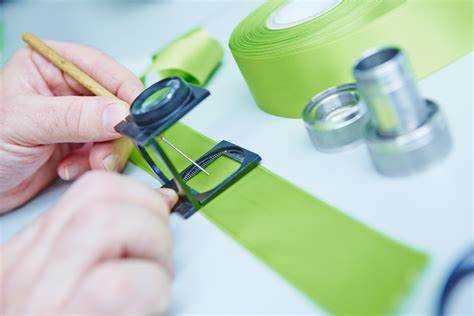Single fiber tester mixed cotton inspection is the basis for
Single fiber tester mixed cotton inspection is the basis for controlling fine yarn defects:
The control of fine yarn defects must start from raw material procurement management, blended cotton management, equipment management, equipment management, production management, and environmental management; at the same time, it must rely on existing spinning test equipment, including single fiber tester and evenness tester. , 100,000 m yarn defect tester carries out defect and harmful defect test control for each related process of spinning. Only by formulating strict key spinning process control standards and inspection requirements, can we effectively remove the small yarn defects in the cotton yarn that harm the cloth surface and meet the standard control requirements of the cloth surface quality for small yarn defects.
At present, the fastest testing instrument for testing the physical indicators of cotton and the quality indicators of mixed cotton is the large-capacity cotton fiber tester. Few spinning manufacturers use single fiber testers to test the physical indicators of cotton. Because the cotton fiber itself contains a large amount of unopened fiber bundles, cords, hard impurities, cotton seed hulls, large slabs and large infertile seeds, etc., the cotton fiber appears to be in a compacted state and needs to be opened to form a fiber bundle. state. The opening effect and opening ability of the opening roller of the single fiber tester are relatively weak. It is relatively difficult to make cotton fiber bundles, and it is easy to produce uneven thickness during the production process. Such cotton fiber bundles are used for single fiber testing. It is easy to damage the opening roller of the single fiber tester when it is loose, and it is also easy to block the opening roller and the measuring channel, and during the formation of the cotton fiber bundle, many defects in the cotton will be accidentally removed, resulting in the single fiber tester Errors in the test data.

In the process of cotton fiber bundle testing, the relative efficiency is much lower than that of combed sliver combed sliver. Therefore, most spinning manufacturers are unwilling to use single fiber tester to test the physical indicators of cotton fiber. Because the cotton fiber large-capacity tester only involves the cotton length, linear density, maturity ratio, strength, uniformity, etc., and the cotton lint rate, maturity percentage, immature fiber percentage, neps, impurities and other defects test They all deviate greatly from the requirements of spinning, and have little control relevance to the actual quality indicators of spinning. Corresponding relationship cannot be established with the quality indicators of carding sliver and combed sliver controlled by spinning semi-products, which makes cotton testing It is difficult to form a corresponding control relationship between indicators and sliver quality control indicators. Therefore, the establishment of cotton blended cotton single fiber tester quality control indicators is conducive to the removal and control of harmful defects in the blowing and carding process, and these control indicators will affect the subsequent process of combing. The control indicators of cotton sliver and combed sliver have an impact.
The single fiber tester is used to control the indicators in high-quality cotton, and the physical indicator control standards for single fiber testing of blended cotton are formulated, especially for short fiber, immature fiber, neps, fiber-bearing seed chips, impurities, and dust. The key to improving the removal efficiency of the blowing-carding unit and combing process is also the key to analyzing the quality control indicators of carded sliver and combed sliver and the control of small yarn defects in cotton yarn and fabric; otherwise, the cotton quality index tested by a single large-capacity fiber tester The guidance of spinning and blended cotton index will have a large actual control deviation; therefore, in the future, the cotton quality index control test of the textile mill must be based on the single fiber tester and the large-capacity cotton fiber tester. Only by assisting, can we truly realize the purpose of controlling the quality of terminal cotton yarn from the source.
For more knowledge about the single fiber tester, please follow qingsun instruments or leave us a message online!

